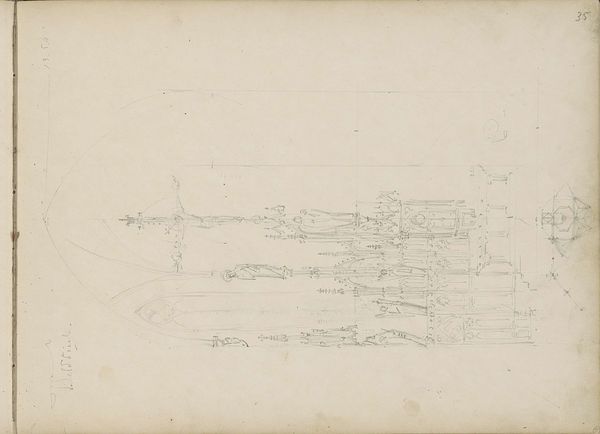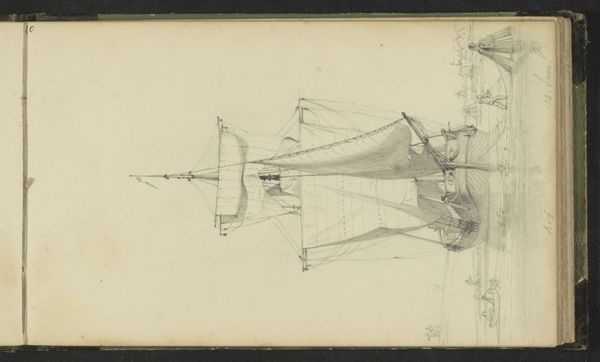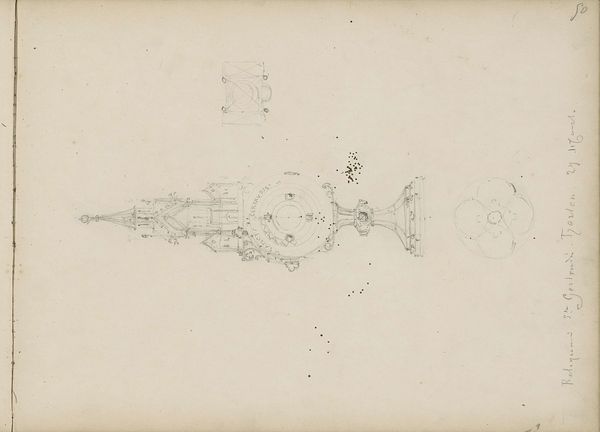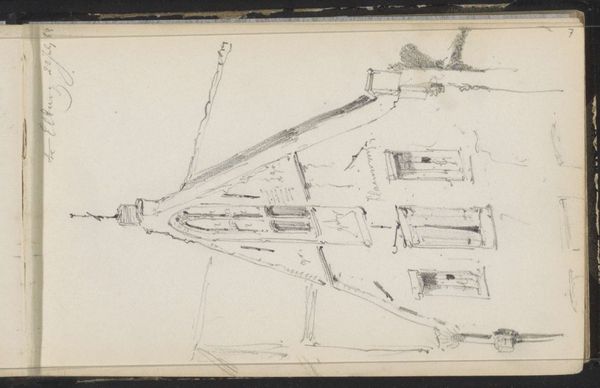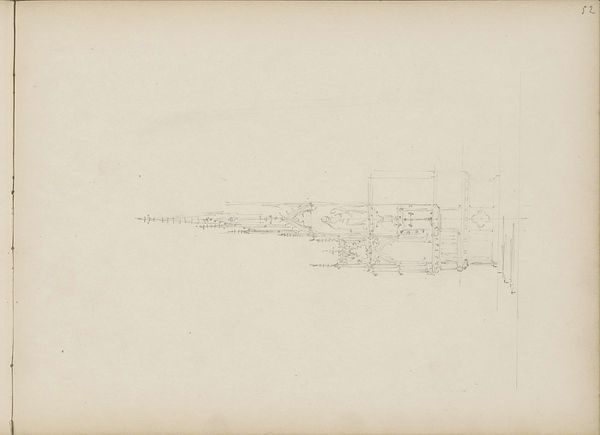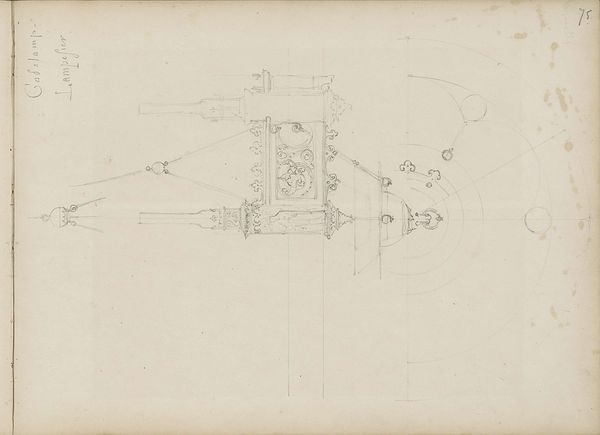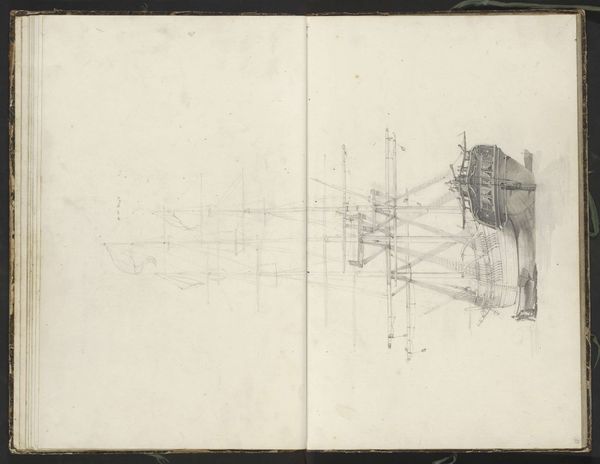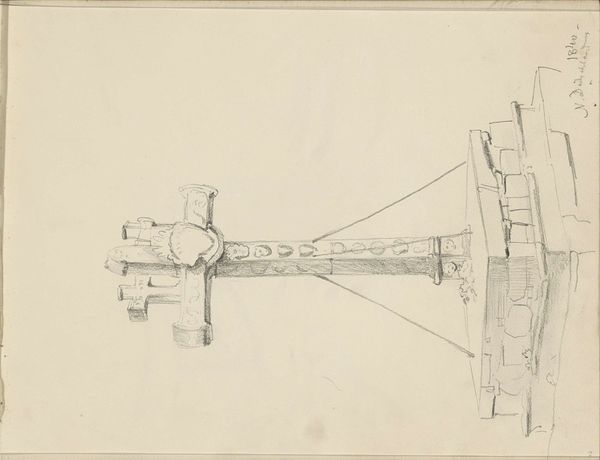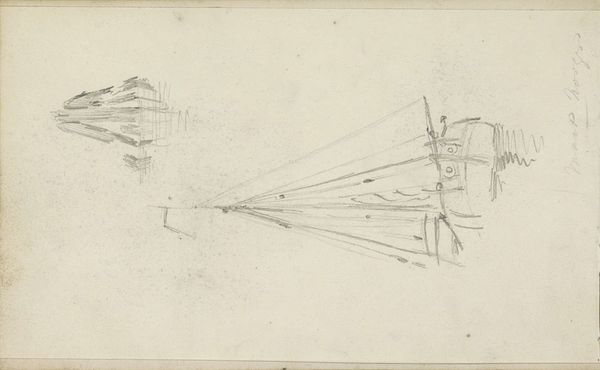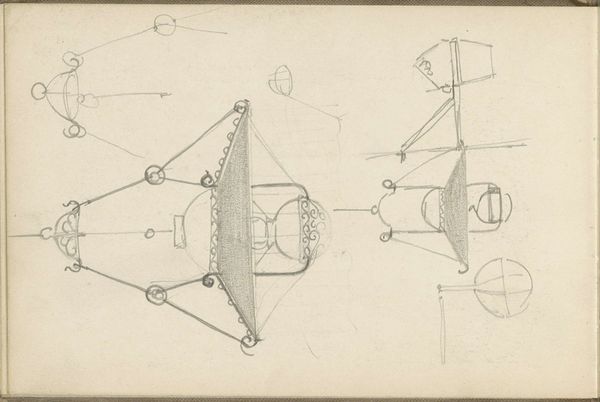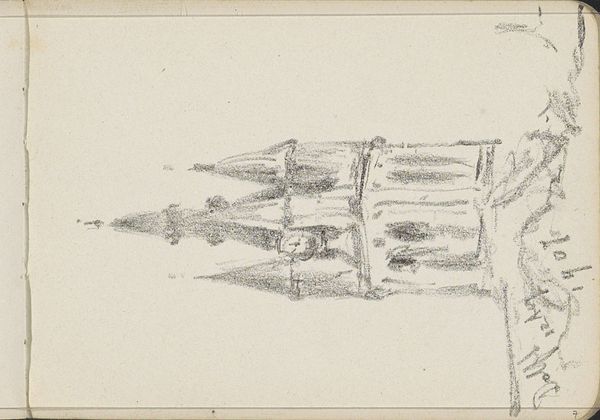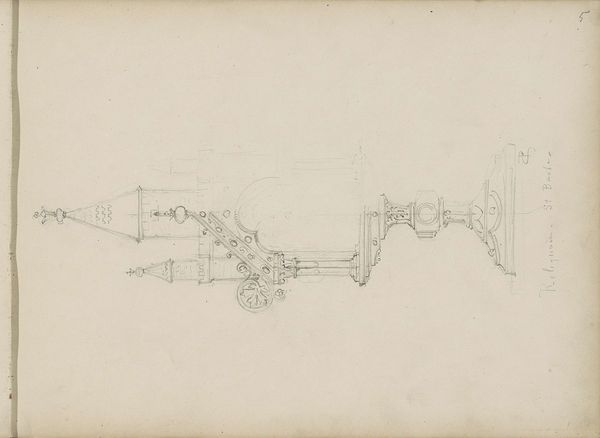
#
architectural sketch
#
aged paper
#
quirky sketch
#
mechanical pen drawing
#
sketch book
#
incomplete sketchy
#
personal sketchbook
#
sketchwork
#
pen-ink sketch
#
architecture drawing
#
building
Copyright: Rijks Museum: Open Domain
Curator: This pen-and-ink architectural study is titled "Tower of the Old Church in Amsterdam and a Gable," dating from around 1903, by George Hendrik Breitner. Editor: My first impression is its raw immediacy. It feels like a fleeting observation, quickly captured, almost a study of light as much as form. The lines are so delicate yet confident. Curator: Breitner, working at a time when Amsterdam was undergoing significant modernization, seems preoccupied here with older structures. This image could suggest a grappling with rapid societal changes, using these old buildings to root himself in the city's history. Editor: Precisely! This almost abstract approach removes any romanticism. It's not just about aesthetics, but about how space, old space, is defined and redefined amid urban development and societal shifts. Where do tradition and heritage fit into the story? Curator: The sketch itself feels like a dialogue between precision and spontaneity. Notice the contrasting qualities within the very line work – the definite outlines against the suggestive shading. These sketches were made in a personal sketchbook. Editor: And considering the socio-political climate of the period, a largely wealthy, white elite were responsible for designing Amsterdam's public facing image – an image Breitner's sketches, originally quite personal, begin to disrupt the canon when they become public and are critically examined. His viewpoint and the seemingly hurried style democratizes this symbol, in a way. It invites more perspectives into the cultural conversation around these important architectural fixtures. Curator: Indeed. Museums, like the Rijksmuseum where this drawing now resides, play a vital role in framing how we access these works, too. It is presented to us as a study of light or a reflection of a transformative moment in Dutch history and the evolution of art itself. Editor: This conversation underlines the enduring resonance of Breitner's observations of this space in time. Curator: Absolutely. Breitner urges us to be more conscientious as spectators engaging with socio-political influences impacting how a work functions as cultural and historical data.
Comments
No comments
Be the first to comment and join the conversation on the ultimate creative platform.
